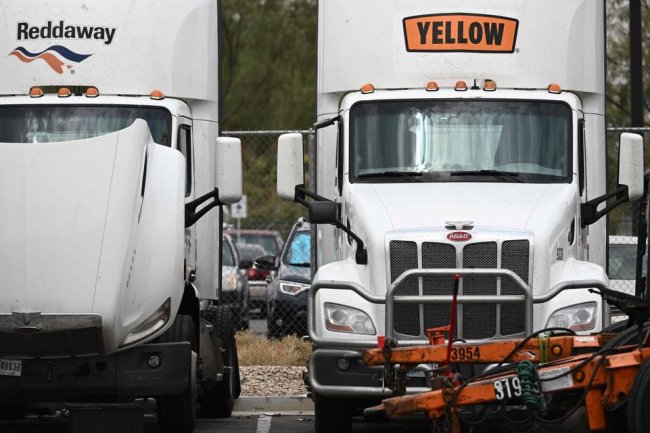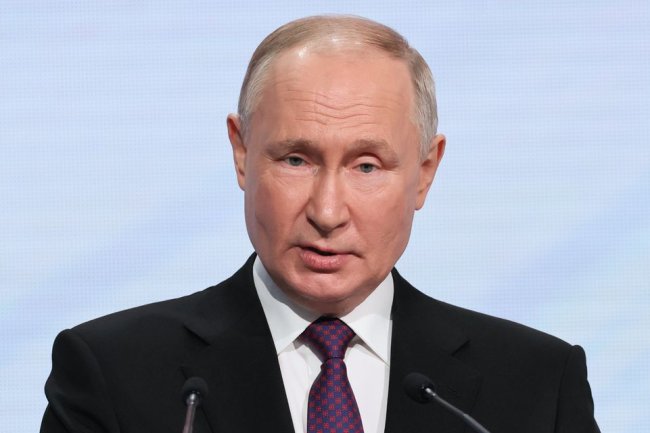Ecuador Assassination Reflects Rapid Rise of Violent Cocaine Trade
Cartels and gangs have transformed the once largely peaceful Andean country into the nexus of drug trafficking that Fernando Villavicencio had pledged to take on Ecuadorean presidential candidate Fernando Villavicencio at a campaign rally in Quito on Wednesday, minutes before he was fatally shot. API/Associated Press API/Associated Press By Ryan Dubé and José de Córdoba Aug. 11, 2023 8:19 pm ET Four days before he was shot dead, presidential hopeful Fernando Villavicencio traveled to a dusty town near Ecuador’s Pacific coast, defying one of the country’s most ruthless drug gangs on its home turf. “Come on, here I am,” he said dur


Four days before he was shot dead, presidential hopeful Fernando Villavicencio traveled to a dusty town near Ecuador’s Pacific coast, defying one of the country’s most ruthless drug gangs on its home turf.
“Come on, here I am,” he said during a campaign rally in the sweltering town of Chone, the birthplace of the Choneros gang that has been at the center of the country’s drug-fueled carnage. “They told me to wear a bulletproof vest, but here I am in just a sweaty shirt.”
During his career as a journalist and later a politician, the 59-year-old Villavicencio often clashed with powerful people ruling the nation of 18 million.
He made enemies through investigations into government corruption, colleagues say, forcing him to hide at one point in the Amazon. While campaigning ahead of the Aug. 20 election, he pledged to fight organized crime and drug gangs that he said had corrupted the police, judges and upper echelons of political power, an assertion shared by Ecuadorean political analysts.
His brazen killing on Wednesday in the capital, Quito—the first time a presidential candidate has been assassinated in Ecuador—shines a spotlight on the corrosive impact of a booming cocaine trade and the emboldened gangs fueling brutal violence.

People taking cover as shots are fired at the rally for Fernando Villavicencio, less than two weeks before Ecuador’s presidential election.
Photo: Agence France-Presse/Getty Images
“The killing of Villavicencio marks a before and after,” said Sebastian Hurtado, president of Profitas, a Quito-based consulting firm. “It wasn’t just a killing, it was a political action as well that will have an immediate impact.”
The assassination occurred as Ecuador was already mired in turmoil, with a deeply unpopular president, Guillermo Lasso, ruling by decree after dissolving the National Assembly in May. Tens of thousands of people have fled north to the U.S. And the country’s security services, which for years operated in a relatively peaceful country, face unprecedented challenges from well-funded and violent drug gangs.
The chaotic landscape is fertile ground for drug gangs, said Daniel Pontón, a security expert in Quito.
“A country in chaos is always going to be more favorable for crime,” he said.

President Guillermo Lasso declared a state of emergency in Ecuador after Fernando Villavicencio’s death.
Photo: Juan Diego Montenegro/Associated Press
On Thursday, Interior Ministry officials said six Colombian suspects have been arrested in the killing of Villavicencio, who was shot in the head while leaving a campaign event in Quito. A high-ranking police official said the men had ties to an organized crime group steeped in cocaine, though a precise motive hadn’t been determined.
A country roughly the size of Oregon that is sandwiched between Colombia and Peru—two countries which grow the leaf central to making cocaine—Ecuador’s problems with cocaine-related crime had been marginal.
Then came two major developments: the end in Colombia of U.S.-supported aerial fumigation of coca, the leaf used to make cocaine, and a surge in violence following the death of a key Ecuadorean cartel leader.
The 2015 end of aerial spraying in Ecuador’s northern neighbor led to a massive expansion of the crop and the finished product. With more cocaine available to ship into Ecuador, the last stop before export to Europe and the U.S., drug gangs began to battle over the growing business.
“Each one wants to control the routes and the ports,” said Mario Pazmiño, the Ecuadorean army’s former director of intelligence. “That’s why we have these confrontations.”

A photo released by Ecuadorean police shows suspects arrested in connection with the killing of Fernando Villavicencio.
Photo: Ecuadorean Police/Agence France-Presse/Getty Images

Police displaying firearms seized in the aftermath of the assassination.
Photo: Ecuadorean Police/REUTERS
For traffickers, it was easier and cheaper to send the drugs through Ecuador because of its porous border, good roads and large Pacific ports with weak security, local security experts said.
Reduced cooperation with U.S. counterdrug agencies in Ecuador—the byproduct of a decision in 2009 to end American drug-interdiction flights out of the Manta air base on the Pacific coast—also made the country more appealing for shipping cocaine than Colombia, where the U.S. Drug Enforcement Administration has long worked closely with police.
Cocaine seizures by Ecuadorean authorities in recent years underscore the country’s importance to global drug smuggling. The proportion of cocaine from Ecuador destined for Europe rose from 9% in 2019 to 33% in 2021, the U.N. Office on Drugs and Crime, or UNODC, recently reported. Cocaine also flows in large quantities from Ecuador north to Central America and on to Mexico and the U.S., the U.N. and counterdrug officials say.
Dutch authorities reported Thursday they had seized about eight tons of cocaine worth some $660 million in July at the port of Rotterdam, the largest cocaine seizure ever at the port. The cocaine was hidden in a container alongside bananas on a ship that sailed from Ecuador.
So much cocaine has been flowing through Ecuador that authorities struggled with how to destroy seized drugs, one Western official said. Another drug expert, Antoine Vella of UNODC in Vienna who writes in detail about cocaine, said: “It’s a booming market. And Ecuador is paying the price.”

Dutch authorities say they seized $660 million worth of cocaine last month from a ship that sailed from Ecuador.
Photo: NETHERLANDS CUSTOMS/AGENCE FRANCE-PRESSE/GETTY IMAGES
The explosive growth has led to the arrival of new gangs, including Albanian mafias taking advantage of loose visa requirements, according to government officials and security experts.
Mexico’s two leading drug-trafficking organizations, the Sinaloa cartel and the Cartel Jalisco Nueva Generación, are allied with Ecuadorean criminal gangs. The Jalisco cartel, which in Mexico has challenged the state by killing politicians and judges, has become the dominant Mexican group in Ecuador, said Douglas Farah, a Washington-based international security consultant who has written frequently about the region’s drug trade.
The assassination of Jorge Luis Zambrano, the head of the Choneros, Ecuador’s most powerful cartel, in December 2020 was a key factor in setting off Ecuador’s spiraling violence, says John Polga-Hecimovich, a Latin America expert at the U.S. Naval Academy.
“It destroyed the Choneros monopoly on drug trafficking, created a power vacuum, and set off intense competition for the business,” said Polga-Hecimovich.

Supporters of presidential candidate Fernando Villavicencio took to the streets after his killing.
Photo: santiago fernandez/EPA/Shutterstock
Homicides have quadrupled since 2019, reaching a record 4,800 last year, according to the Interior Ministry, making a country popular with American retirees among the most dangerous in Latin America. Gruesome massacres in prisons, which are controlled by gangs, are routine. Gunmen kill police officers and prosecutors.
“It is obvious that we are losing the war against these cartels,” said Jan Topic, a presidential candidate who is calling for a crackdown on gangs similar to one carried out in El Salvador by President Nayib Bukele. “Our biggest problem now is the lack of strategy, the lack of a plan and lack of objectives.”
During the campaign, Villavicencio was one of the more vocal proponents for going after drug traffickers. He pledged to build a maximum-security prison in the Amazon for gang leaders, expand antidrug cooperation with the U.S. and purge the police of corrupt officers.
Villavicencio’s wife, Verónica Sarauz, said her husband was targeted due to his willingness to go after organized crime. Villavicencio had spoken about threats from the Choneros, a prison-led organization that emerged in the 1990s and is believed to be working with Mexico’s Sinaloa cartel.
“They killed my husband because he was the only one to confront the political mafias and drug traffickers in this country,” she wrote on X, the site formerly known as Twitter.
The breakdown of the rule of law in Ecuador raises concerns about the strengthening of organized crime elsewhere in Latin America, security experts say. Drug gangs have expanded in some regions of Colombia and Venezuela, as well as in Central America and northern Mexico.
“Democracy is under assault across the hemisphere as you have criminal groups replacing the state,” said Farah, the Washington-based security consultant. “It’s one of the harbingers of what’s coming as rule of law disappears.”

A hearse carrying the body of Fernando Villavicencio leaving the morgue in Quito on Thursday.
Photo: Carlos Noriega/Associated Press
—Juan Forero contributed to this article.
Write to Ryan Dubé at [email protected] and José de Córdoba at [email protected]
What's Your Reaction?






















